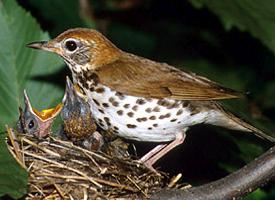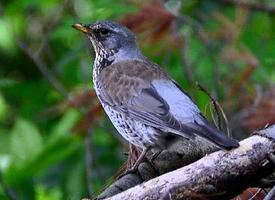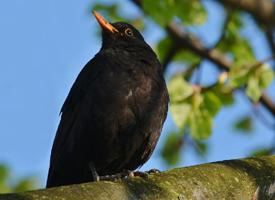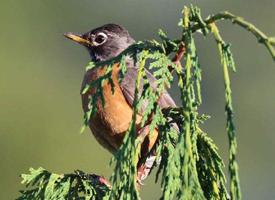
Poids et mesures
| Longueur | de 19 à 21 cm |
|---|
Description de l'animal
The Wood Thrush (Hylocichla mustelina) is a North American migratory bird that is a member of the thrush family (Turdidae), renowned for its beautiful, flute-like song. This medium-sized thrush has a length of approximately 7.1 to 8.3 inches (18 to 21 cm) and weighs around 48 to 72 grams. It possesses a wingspan that ranges from 11.8 to 13.4 inches (30 to 34 cm), making it a relatively compact bird with a sturdy posture.The plumage of the Wood Thrush is a striking combination of colors and patterns. Its upperparts are a warm, reddish-brown, which seamlessly blends into a white underbelly. This white underbelly is distinctively marked with large, dark spots that cover the chest and flanks, creating a pattern that is both eye-catching and serves as a camouflage in the dappled light of its forest habitat. The bird's face is accentuated with a white eye-ring, giving it a somewhat expressive appearance. The bill of the Wood Thrush is of average length, slightly curved, and yellowish, enabling it to forage effectively.
One of the most remarkable features of the Wood Thrush is its voice. The bird's song is a series of ethereal, melodic phrases, each ending in a trill, with a quality that is both haunting and beautiful. These songs are often heard at dawn and dusk, echoing through deciduous forests and woodland areas where the Wood Thrush prefers to reside. The complexity and beauty of its song have made the Wood Thrush a symbol of American wilderness and a subject of admiration among bird enthusiasts and poets alike.
The Wood Thrush is predominantly found in the eastern United States during the breeding season, from April to September, extending north into Canada and as far south as northern Florida. In the winter, it migrates to the forests of Central America, where it occupies a different ecological niche, favoring tropical forests. Its habitat in both breeding and wintering grounds is characterized by dense, mature forests with a rich understory, which provides ample cover and feeding opportunities.
Diet-wise, the Wood Thrush is omnivorous but relies heavily on invertebrates such as insects and earthworms during the breeding season. It also consumes a significant amount of fruit, especially in the winter months, which helps sustain it during its long migratory journey. This dietary flexibility allows it to thrive in a variety of forested environments.
Despite its beauty and the joy it brings to those who hear its song, the Wood Thrush faces significant challenges. Habitat loss due to deforestation, fragmentation, and urbanization, both in its breeding and wintering grounds, poses a significant threat to its populations. Additionally, climate change and the resulting shifts in habitat could further impact its numbers. Conservation efforts are crucial to ensure the survival of this species, which involves protecting large tracts of forest habitat and supporting sustainable land-use practices.
In summary, the Wood Thrush is a captivating bird species, notable for its distinctive appearance, enchanting song, and the ecological role it plays in forest ecosystems across the Americas. Its presence enriches the biodiversity of its habitat, making it a species of great ecological and cultural value.
Animaux similaires
Nouvelles photos d'animaux
Top 10 des animaux
- Dolphin gull (Leucophaeus scoresbii)
- Diana monkey (Cercopithecus diana)
- Moustached guenon (Cercopithecus cephus)
- Galápagos tortoise (Geochelone nigra complex)
- Japanese macaque (Macaca fuscata)
- Stone loach (Barbatula barbatula)
- Russian tortoise (Testudo horsfieldii)
- Greek tortoise (Testudo graeca)
- Common flying dragon (Draco volans)
- Vendace (Coregonus albula)


